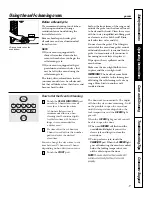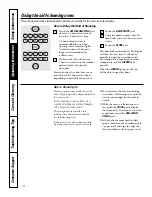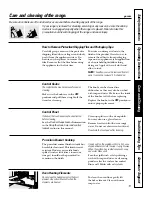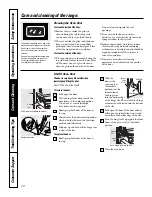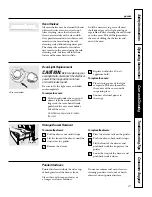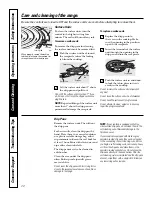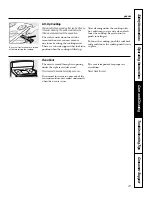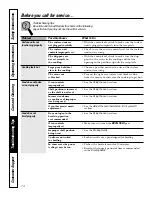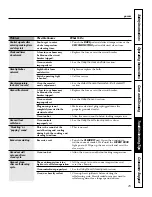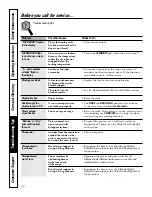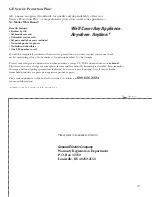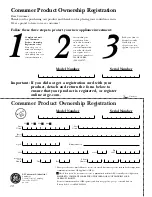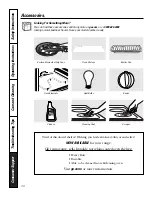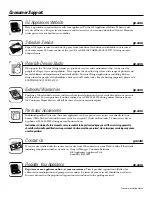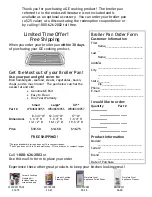
22
Consumer Support
Tr
oubleshooting T
ips
Care and Cleaning
Operating Instructions
Safety Instructions
Care and cleaning of the range.
Be sure the controls are turned to OFF and the surface units are cool before attempting to remove them.
Surface Units
To clean the surface units, turn the
control to the highest setting for a
minute. The coils will burn off any soil.
To remove a surface unit:
To remove the drip pans for cleaning,
the surface units must be removed first.
Push the surface unit back toward
the receptacle to free the locking
tab from the cooktop.
Lift the surface unit about 1
″
above
the drip pan and pull it out.
Do not lift the surface unit more than 1
″
. If you
do, it may not lie flat on the drip pan when you
plug it back in.
NOTE:
Repeated lifting of the surface unit
more than 1
″
above the drip pan can
permanently damage the receptacle.
To replace a surface unit:
Replace the drip pan into
the recess in the cooktop. Make
sure the opening in the pan lines
up with the receptacle.
Insert the terminals of the surface
unit through the opening in the
drip pan and into the receptacle.
Push the surface unit in and down
to lock the tab in place so it rests
evenly in the cooktop.
Do not immerse the surface units in liquids of
any kind.
Do not clean the surface units in a dishwasher.
Do not bend the surface unit plug terminals.
Do not attempt to clean, adjust or in any way
repair the plug-in receptacle.
Drip Pans
Remove the surface units. Then lift out
the drip pans.
For best results, clean the drip pans by
hand. Place them in a covered container
or a plastic sealable storage bag, with
1
⁄
4
cup ammonia to loosen the soil. Soak for
at least 1 hour. Rinse with clean water and
wipe with a clean soft cloth.
The drip pans may also be cleaned in
a dishwasher.
Clean the area under the drip pans
often. Built-up soil, especially grease,
may catch fire.
Do not cover the drip pans with foil. Using foil so
close to the receptacle could cause shock, fire or
damage to the range.
NOTE:
If your cooktop is equipped with shiny,
silver-colored drip pans, do not clean them in the
self-cleaning oven. Permanent damage to the
finish can occur.
If your cooktop is equipped with black or gray
porcelain-coated drip pans, they can be cleaned
in the oven during the self-cleaning cycle. Before
you begin a self-cleaning cycle, remove any heavy
soil from the drip pans and place them on the
porcelain-coated oven shelves. Do not place the
drip pans directly on the oven bottom. After the
self-cleaning cycle is completed and the drip pans
are cool, wipe them with a damp cloth to remove
any remaining ash or residue.
Surface unit
Drip pan
Receptacle
Locking
tab
Locking tab
Drip
pan
Cooktop
rim
When properly seated, the locking
tab should lock onto the cooktop rim
through the notch in the drip pan.
Surface
unit
Locking tab










